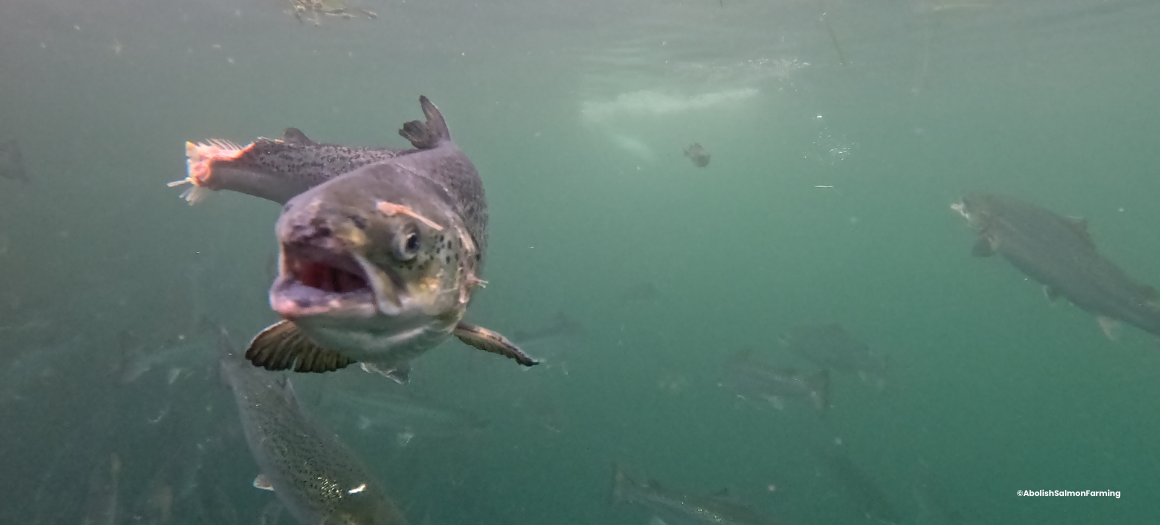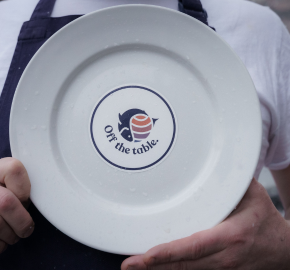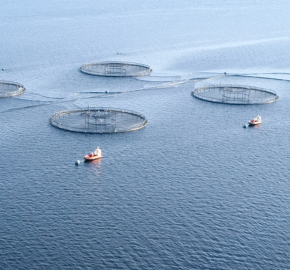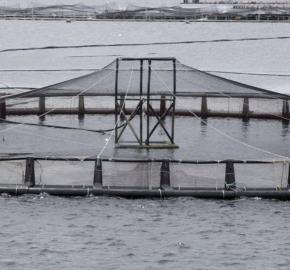Report finds Scottish salmon farms systematically failing to meet own guidelines, with up to two billion sea lice emanating from a single farm in a single week

A new report from WildFish has found that the Scottish salmon and trout farming industry is allowing parasitic sea lice levels to reach over 5 million lice on a single farm at one time[i], with up to 2 billion sea lice being emitted over the course of a week, risking fatal spread to wild fish.[ii]
Released today, Breaching the Limits analyses industry-reported sea lice data, Fish Health Inspectorate (FHI) records and reported chemicals usage on Scottish marine fish farms from 2022. It reveals that last year the Scottish industry breached its own guidelines, or failed to supply a lice count, for 40% of its counts. Part of the industry’s Code of Good Practice (CoGP), these guidelines are in themselves five times more lenient than neighbouring Norway; additionally, they are unverified.
A type of marine parasite, high levels of sea lice on salmon farms are of concern to both farmed fish and wild fish populations; as few as two lice can fatally damage a young wild salmon. The Scottish Government last year declared that the wild Atlantic salmon population is in crisis, while catches for wild salmon and sea trout in Scotland in 2021 were the lowest on record.
This analysis of industry sea lice data from last year is yet another demonstration of why the Scottish Government needs to take urgent and strong action to tackle sea lice infestations on salmon and trout farms in our coastal waters.
Rachel Mulrenan
Scotland Director, WildFish
During the period of young salmon migration, when salmon are most vulnerable to sea lice due to their small size, the Scottish salmon and trout industry reported sea lice levels that exceeded the industry limits on 1 in 4 occasions.[iii] The Norwegian company Mowi recorded sea lice levels as high as 8.2 lice per fish on one of its farms; 16 times the industry limit, and 40-80 times higher than what would be permitted in the company’s home country of Norway.
Loch Duart was the worst-performing producer overall in relation to sea lice numbers. Marketed as a high-end farmed salmon company, and supplier to leading chefs and restaurants across the UK and beyond, this producer had concerning levels of sea lice throughout 2022. Over a third of sea lice counts provided by the company in 2022 were above the industry thresholds; one of its farms breached Marine Scotland’s 2.0 sea lice limit a total of 19 times – far more than any other producer.
In addition to the risk these parasites pose to wild fish, sea lice are also a concern for farmed fish welfare. The damage caused by the attached lice can be severe, with the lice eating fish alive or making them vulnerable to fatal infections.
These parasites cause significant health, animal welfare and mortality issues both on the farms and in our wild salmon and sea trout. Poorly controlled, not only do they expose the farmed fish to distress, pain, injury and disease, but they multiply in their billions. Simply swimming past these farms could then prove fatal to our wild fish.
Dr Matt Palmer
Farmed Salmon Campaign Manager
Following the publication of a report by the Scottish Government’s Salmon Interactions Working Group in 2020, the Scottish Environment Protection Agency (SEPA) was tasked with monitoring and reducing the impact of sea lice spreading from fish farms to wild salmonids (salmon and trout). However, progress on the framework has been slow, and it will not initially address the risk posed by sea lice on Scotland’s 200+ existing salmon and trout farms.
WildFish’s report comes in the wake of a damning independent review of Scotland’s performance inter-governmental body NASCO – of which Scotland is a member – in relation to its sea lice management. This NASCO review concluded that member countries have not taken sufficient action to protect wild salmon from the negative impacts of open-net fish farming, and that self-regulation by the industry has been insufficient.
Ms Mulrenan continued: “The Scottish salmon farming industry lauds its Code of Good Practice as ‘world class’; a supposed indication that Scottish salmon and trout farms have their sea lice numbers under control. However, our analysis shows that this is misleading on a number of levels – not only is the industry failing to comply with the Code for up for 40% of the time, with no repercussions; the Code itself is far too lenient as to be effective, and the counts are unverified.
“Combined with last week’s NASCO report, these findings should be a real wake up call to the Scottish Government; they must take decisive action and impose an absolute limit on sea lice numbers, to curb further damage being caused to our environment and our wild fish by parasitic sea lice from fish farms.”
The report recommendations are as follows:
- Scottish Government should close open-net salmon and trout farms and encourage alternative aquaculture practices that are less environmentally damaging.
- Scottish Government should immediately introduce absolute limits on sea lice numbers on fish farms, in line with the best available science and the precautionary principle.
- Scottish Government must not rely on industry self-regulation to ensure that marine fish farming is having no negative impact on wild fish populations.
- SEPA should at a minimum close reporting loopholes and independently verify industry-supplied sea lice data.
The NASCO Performance Review report is published here: https://nasco.int/wp-content/uploads/2023/03/CNL2317_Report-of-the-Third-NASCO-Performance-Review.pdf The Salmon Aquaculture section is between pages 58 and 64.
WildFish’s response to the NASCO report can be found here: https://wildfish.org/latest-news/nasco-report/
[i] Mowi Scotland’s Seaforth farm reported an average adult sea lice per fish of 3.03 in week 5 of 2022 (SEPA). A Fish Health Inspectorate report in the weeks preceding (14th Jan 2022) had reported 1,698,854 fish on this site. Using the average and the fish population size, an estimate of 5,147,528 lice on this single farm was determined.
[ii] Mowi Grey Horse Outer farm reported an average adult sea lice per fish of 8.2 in week 12 of 2022 (SEPA). Based on mortality rates provided to the Fish Health Inspectorate in the same week, this farm held approx. 602,692 farmed salmon. Using this information an estimated population of 4,942,077 adult sea lice was determined. Using known egg production and hatching success data (sea temperature dependent), the number of new sea lice (nauplii) released from this farm alone during this week was estimated to be 2,152,768,707 (Brooker et al., 2018).
[iii] The Sensitive Period runs from February – June




These farms need to be monitored more closely, and the three strike rules should be applied, meaning forced closure of persistent offenders.